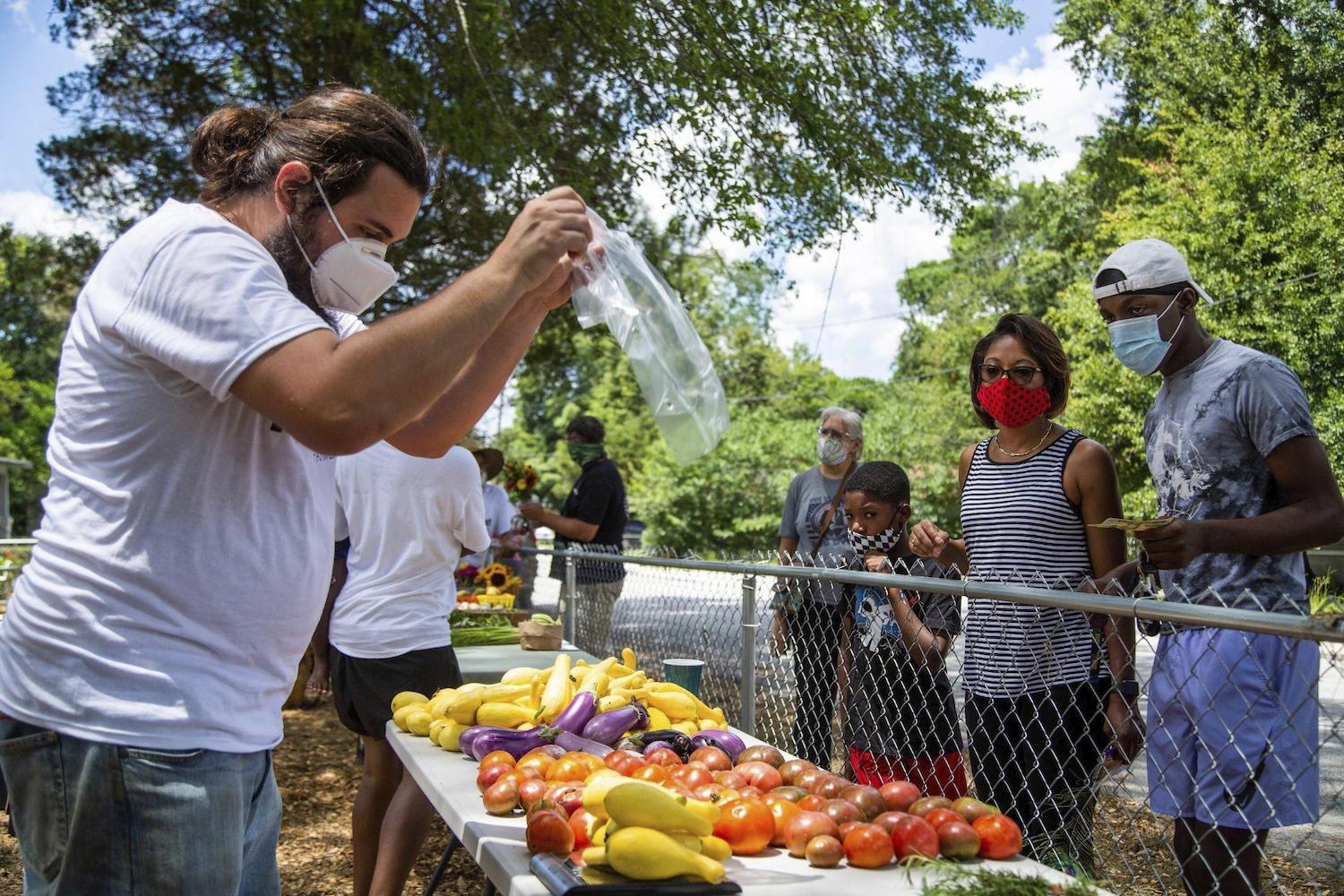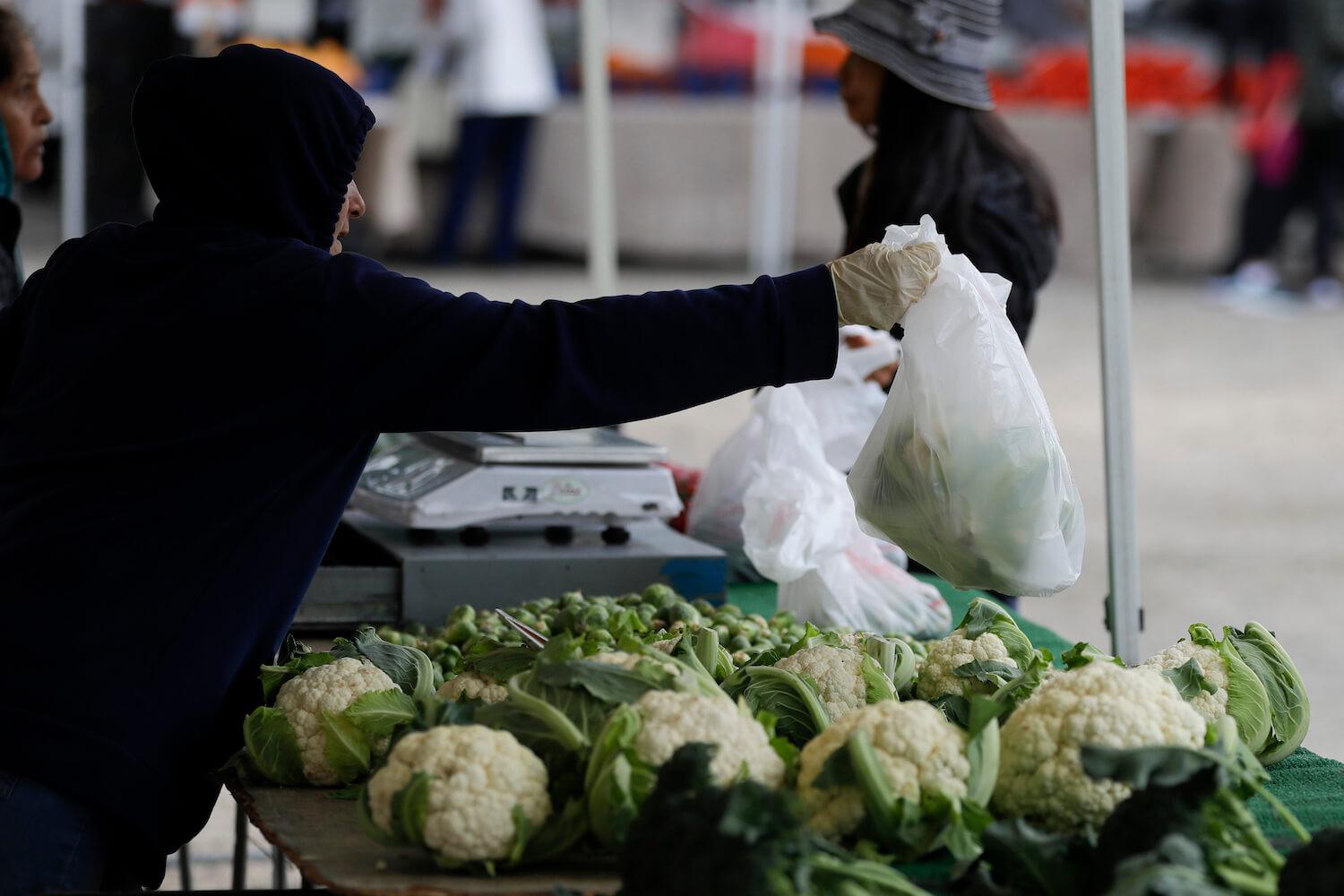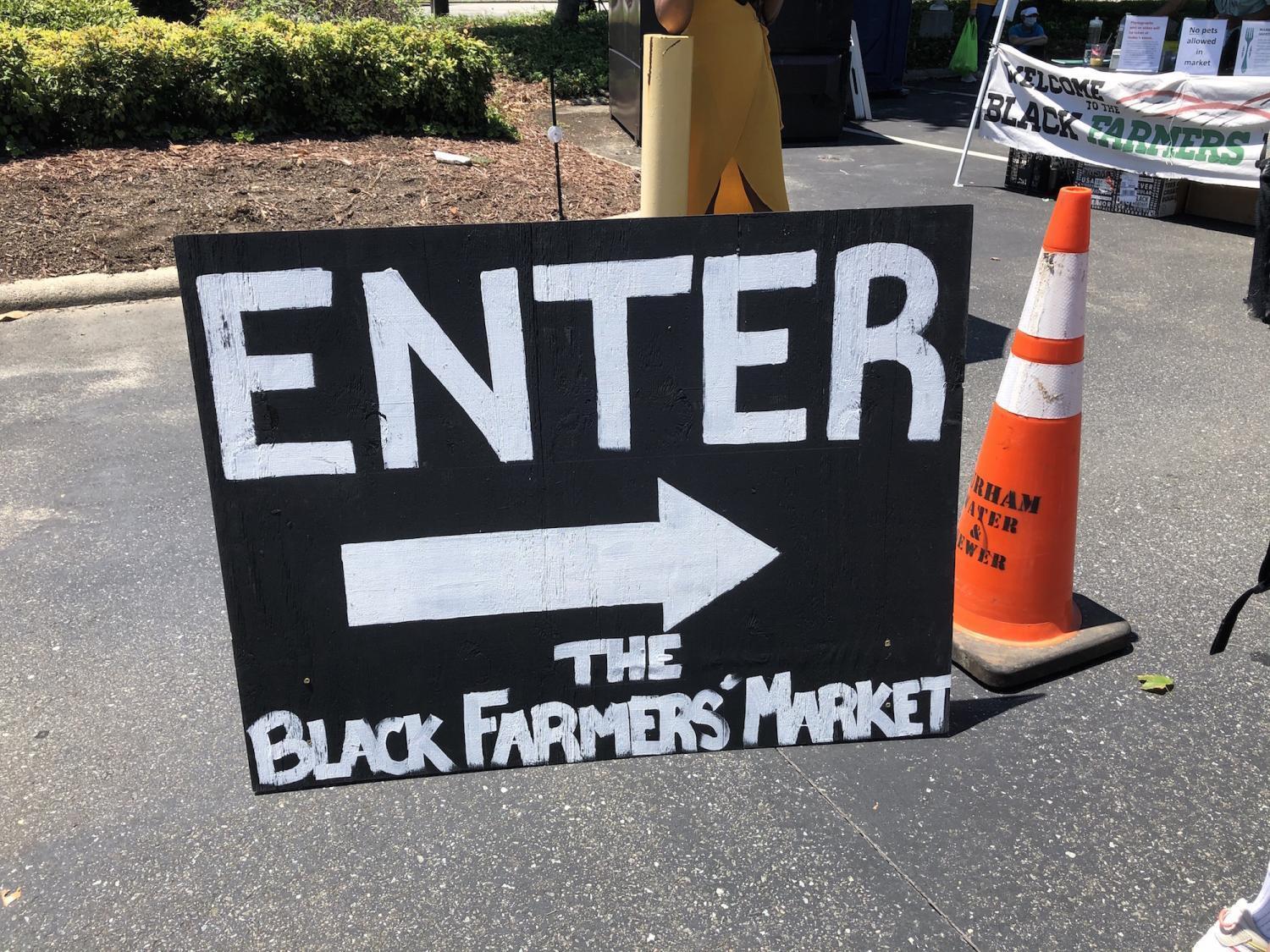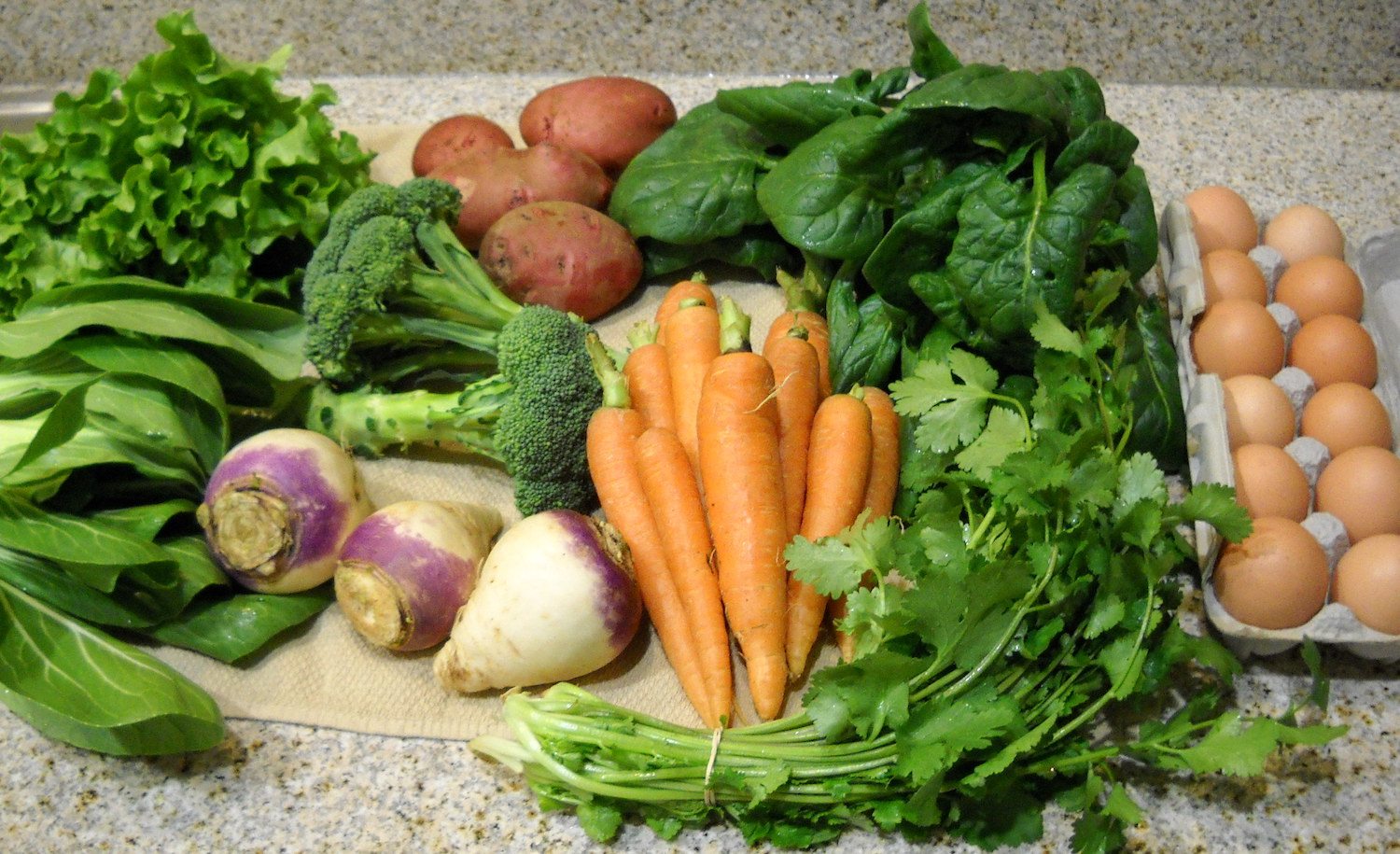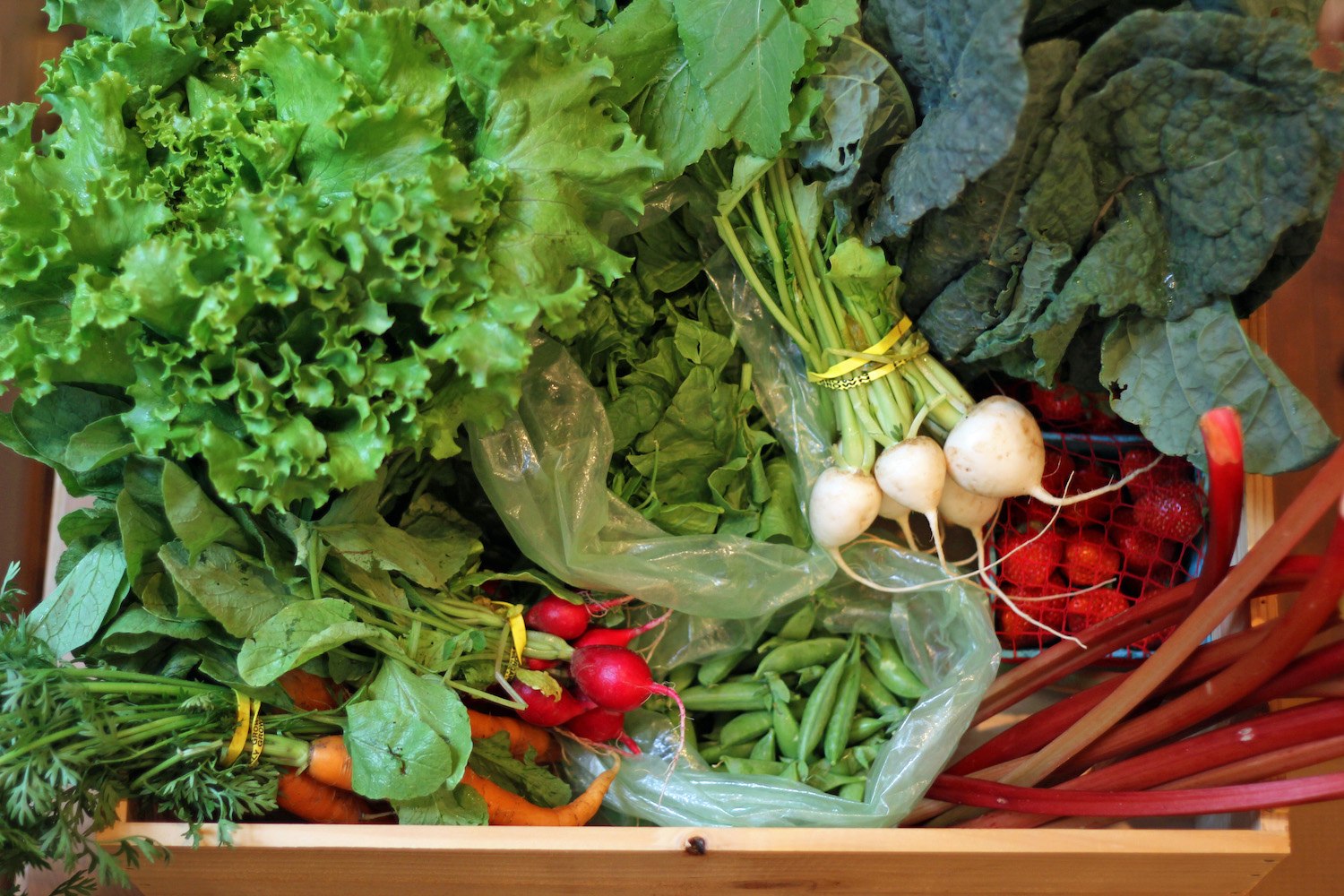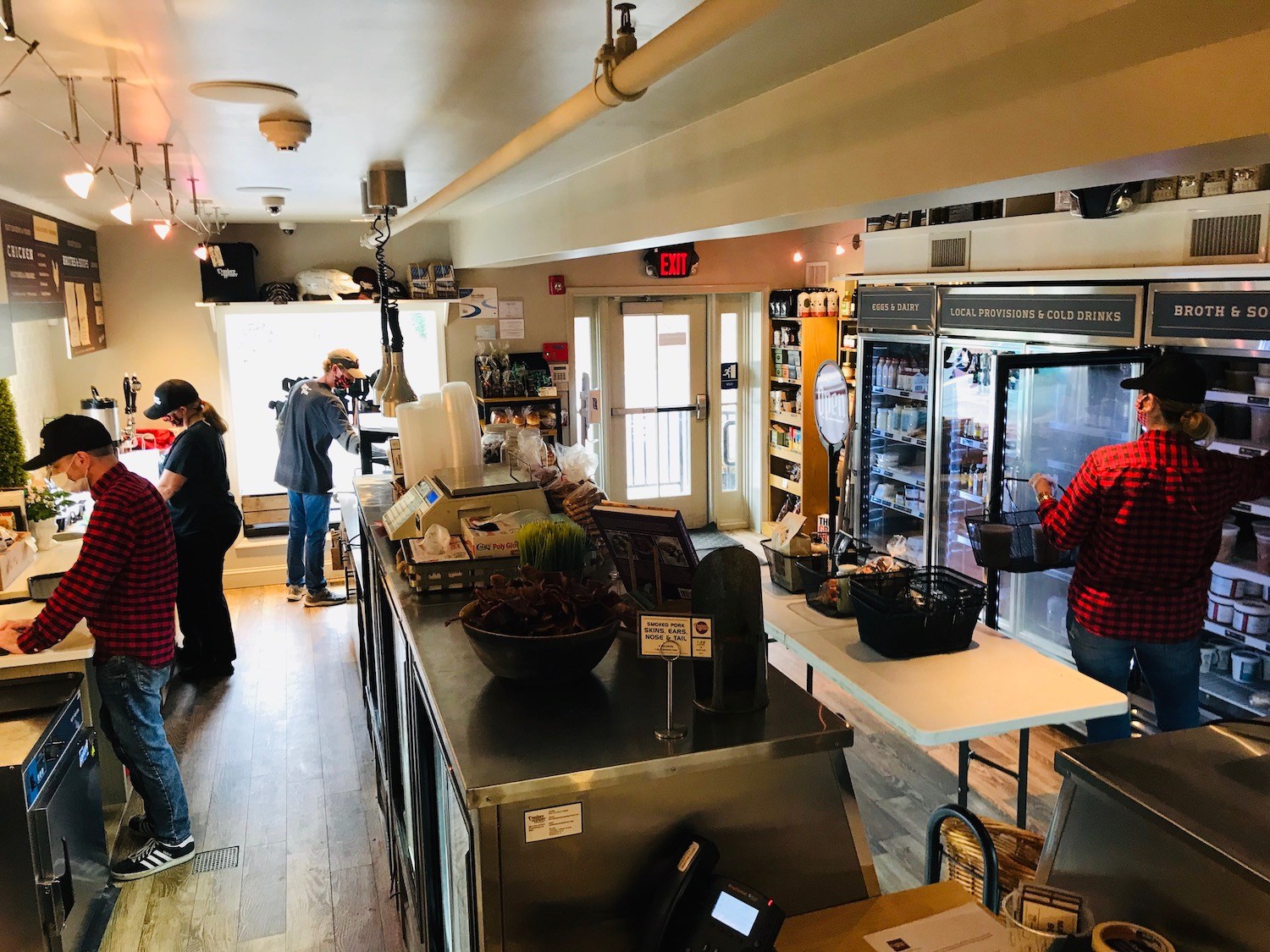Safety precautions put in place to prevent the spread of Covid-19 have complicated the beloved tradition of smelling and touching food at farmers’ markets.
Customers at farmers’ markets have developed countless ways to test if food is fresh: knocking on watermelons to see if they’re ripe, rotating pomegranates to look for age cracks, sniffing mushrooms for woodsy odors, or sampling a cucumber before purchasing a pound.
But each of these testing techniques need to be reexamined in the age of Covid-19. Customers at many farmers’ markets can no longer handle produce they don’t intend to purchase, and masks limit the ability to smell or sample food. Though some markets are open year-round, many farmers’ markets are closing their outdoor locations and moving online for winter, further restricting customers’ ability to assess the produce they’re purchasing. But experts say there are workarounds for assessing the freshness and taste of produce—even during a pandemic.
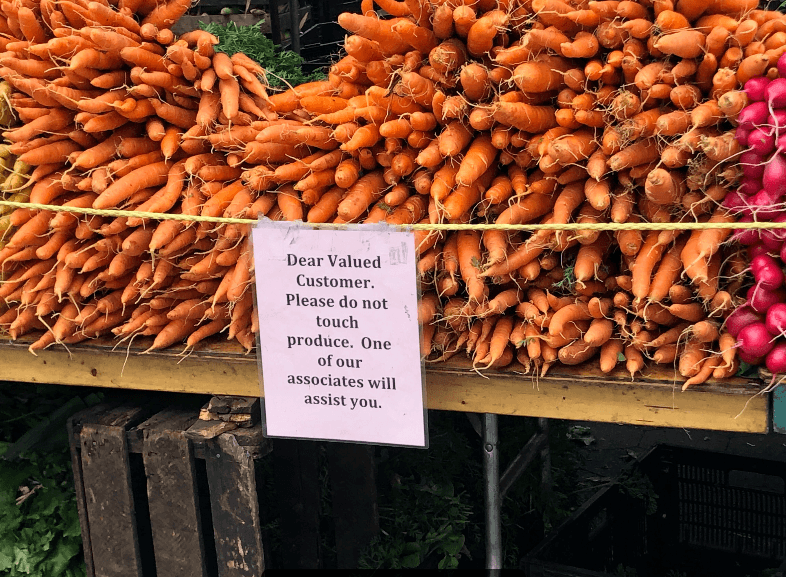
For consumers, quality inspections are mostly on an item-to-item basis since there’s not a comprehensive guide available, according to Elizabeth Mitcham, director of the University of California, Davis’s Postharvest Technology Center. “Most of the resources out there are geared towards the industry, like retailers or produce handlers,” she explained. Individual industry groups, like for pears, raisins, peaches, and nectarines, have all released freshness testing guides for retailers and guides like “The Produce Clerk’s Handbook” have valuable information for customers. At the local level, agricultural extension offices and statewide agriculture departments often release great information about seasonality and local ripeness. But there’s not a basic, customer-focused resource. “In the past, I think there wasn’t nearly the attention to [produce freshness],” Mitcham said. “Maybe that’s why these things haven’t been put in one consolidated place.”
You can’t knock on watermelons, but they can. They can inspect potatoes for eyes, unfurl bunches of herbs for signs of shriveling, and separate apples best for saucing, baking, or snacking.
Farmers’ markets do present a wealth of consolidated information in one form: the farmers themselves. “We want people to engage with us,” said Jerry Hebron, executive director of The Oakland Avenue Urban Farm in Detroit. “We want to be able to talk about our growing practices, and how we’re handling the food here.” Whether online or in-person, farmers’ markets allow food growers to double as vendors, not only shortening the food chain (often increasing the freshness of produce) but allowing customers to ask questions about food freshness, like: “What day was this picked? How was it stored?”
Hebron said that his farm hasn’t seen customer concern about produce freshness, a success she attributes to the farm widely promoting their harvesting schedule to Detroiters (produce is harvested the day of an order placement, or the night before an in-person market).
In-person markets are the best place for customers to educate themselves about freshness and farming practices given the availability of the farmer, but similar questions can be asked on a phone call, Facebook message, or via an online market or hub. Iowa City food nonprofit Field to Family says that its online market and food hub encourages customers to reach out to the farmers to ask questions or leave compliments, according to communications coordinator Julia Poska. “In some cases, customers will contact us, and we’ll facilitate creating that connection with the vendor to help create communication.”
“Maybe you have a disappointing experience one time. But that’s nature, you know. Sometimes it rains on your wedding day.”
Online markets and hubs also have methods to prevent lower-quality produce from reaching customers. “Every single day, we have people in the coolers assessing the produce and moving things out that are not saleable,” says Mary McClelland, marketing manager of Headwater Food Hub, a produce membership program based in Ontario, New York.
While the coronavirus pandemic has upended the practice of customers handling food at in-person markets, that doesn’t mean vendors won’t check produce freshness right in front of you on demand. You can’t knock on watermelons, but they can. They can inspect potatoes for eyes, unfurl bunches of herbs for signs of shriveling, and separate apples best for saucing, baking, or snacking.
Online orders are riskier, but few farmers are looking to trick customers who buy based on website photos. “We try our best to match what is in the photo,” said Erin Bernsen of the St. Louis-area Legacy Circle Farms. “We give our customers the highest-quality, best produce we have. We the farmers eat the ugly stuff. We eat the peppers that a squirrel has nibbled on. We eat the corn that the possum ransacked.”
“We the farmers eat the ugly stuff. We eat the peppers that a squirrel has nibbled on. We eat the corn that the possum ransacked.”
There are some produce options that are riskier to order online if you haven’t built a trusting relationship with your farmers’ market vendor. “Berries would be a tough one,” Mitcham says. “It’s a high-ticket item. My biggest concern with berries is decay or mold in the package.” Easily bruised fruit, like peaches and pawpaws, are riskier online orders. Safer bets include apples, pears, and vegetables like leafy greens that can be identified as fresh by sight alone and are less-risky online orders. The upcoming autumnal cornucopia of squash, pumpkins, and rutabagas will stay fresh for much longer; rutabagas are so sturdy that Ithaca’s Farmers’ Market will be using them as curling stones this year.
Farmers and vendors have also adapted to the lack of in-person sampling by changing how and what they sell: more honey sticks, smaller jars of jalapeno jam, and tiny portions of olive oil to promote at-home sampling before a big-bottle commitment. “The vendors have become quite astute at explaining their product more than they might have done before,” says Steve Ridler, market manager of Troy Waterfront Farmers Market in upstate New York. Experts recommend asking vendors all sorts of questions: Many can describe the taste, aftertaste, and terroir of their products in lieu of food samples.
Sometimes, though, you will get squashed grapes or soggy cucumbers, and McClelland wants you to see that as a positive. “This is sometimes just the process like a local food …. It has a lower shelf life or a different shelf life. And we’re also like, you have to be attuned to seasonality. So, okay, maybe you have a disappointing experience one time. But that’s nature, you know. Sometimes it rains on your wedding day.”
